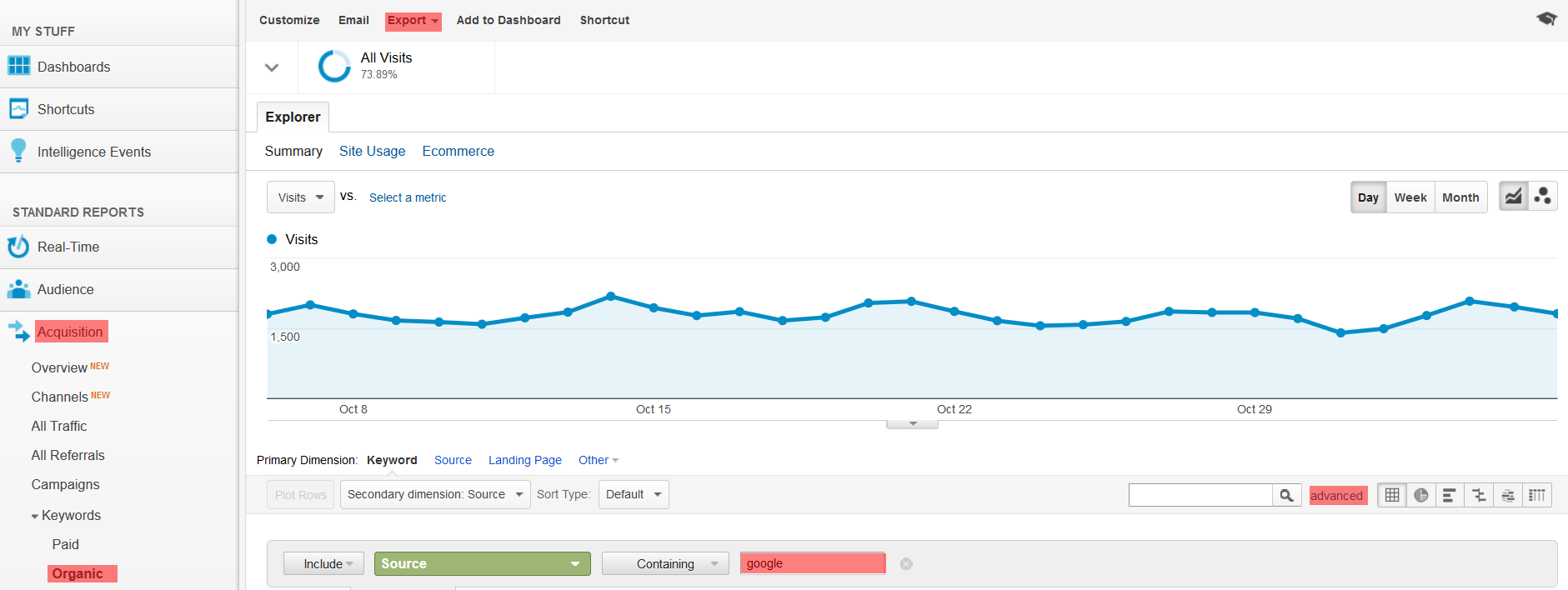Tracking Organic Website Traffic after Google’s “Not Provided” Policy Change
Back in 2011, Google changed their policy to encrypt (hide) any keyword data through its search engine. You may have noticed that more and more keywords are being listed as “not provided” in your Google Analytics account. This has caused increased concerns in the Search Engine Optimization (SEO) world.
Google is stating that this change is to protect user privacy, but there may be other reasons involved such as increasing Google’s revenue through AdWords (Paid Search). Currently, webmasters are seeing that 70% of their keyword data are hidden under “not provided”, and soon it will be 100%.
Several marketers are struggling to discover ways to find data using different methods. There are several ways to track or predict keywords that will optimize your website traffic. Let’s discuss some of them:
1. Keep a Record of Current Keyword Data – For old websites, I would strongly suggest to keep a record of your current keyword data, as there is still some amount of data available through Google Analytics. Export your current list of keywords (for Google to help figure out which keywords are sending traffic to your website).
How to Export Keywords from Google Analytics:
- Login into Google Analytics Account
- Go to Acquisition > Keywords > Organic
- Select “Secondary Dimension” as Source
- Add advance filter to include only keywords from source “Google”
- Click on “Export”
2. Use Google Webmaster Tools – Google webmaster tools also provide a list of keywords that are sending traffic to a particular web page. The data from Google webmaster tools might be little vague, but it still could be helpful in finding ways to optimize a web page. Add your website to Google webmaster tools. If you haven’t done so yet, click the following link to learn how to add a website to Google Webmaster Tools.
3. Track Webpages Instead of Keywords – Webmasters have used Google Analytics to see which keywords are sending traffic to a particular site. Instead of tracking keywords, you now need to look for webpages receiving a lot of organic traffic, and analyze that page for keywords that the webpage has been optimized for.
4. Manual Rank Checking – Being a webmaster or business owner, you would generally know which keywords your potential visitors/customers would use to find their specific product or service. So, make a little list of such keywords and try to check your current search engine rankings (using ranking tools or manually).
It might be a little harder than before to track organic traffic and analyze data, but there are still ways to accomplish this even after Google’s “not provided” policy changes.




